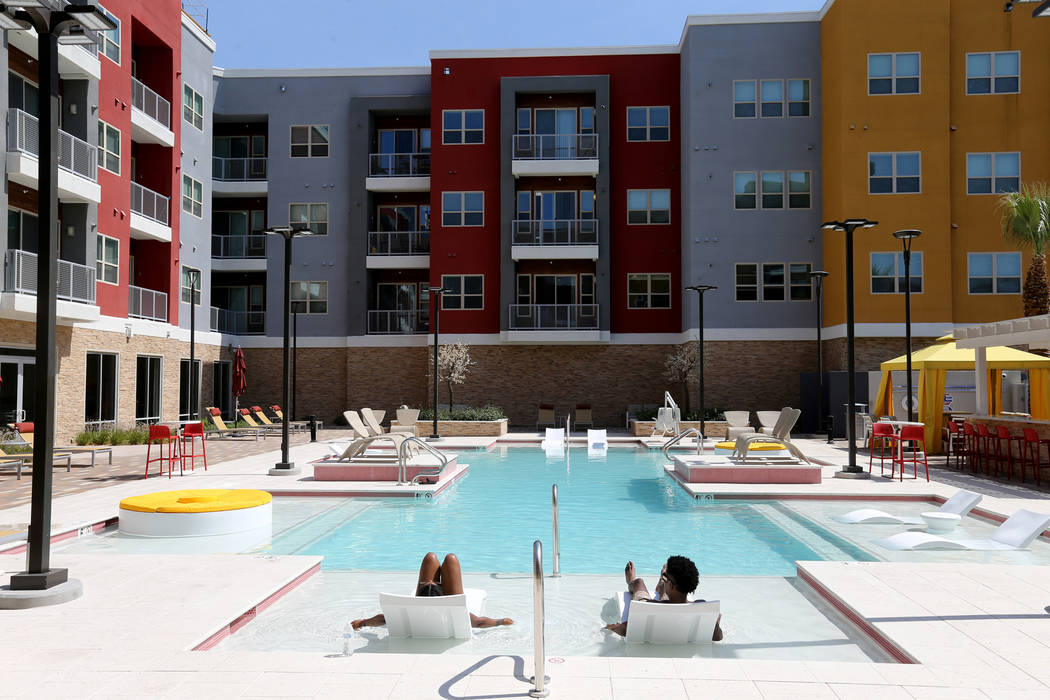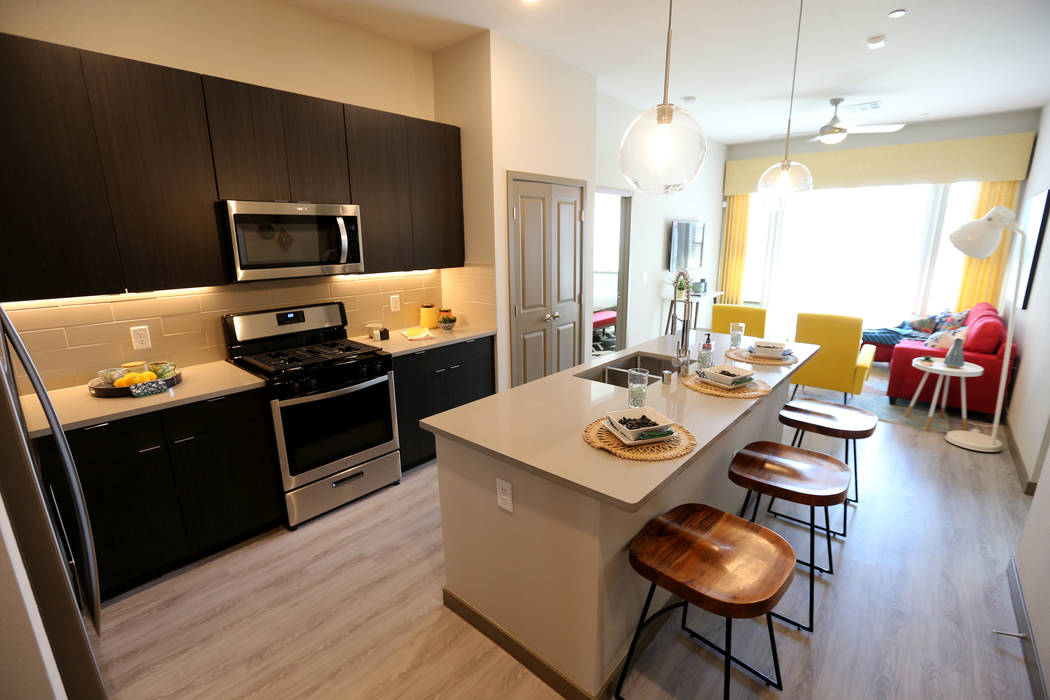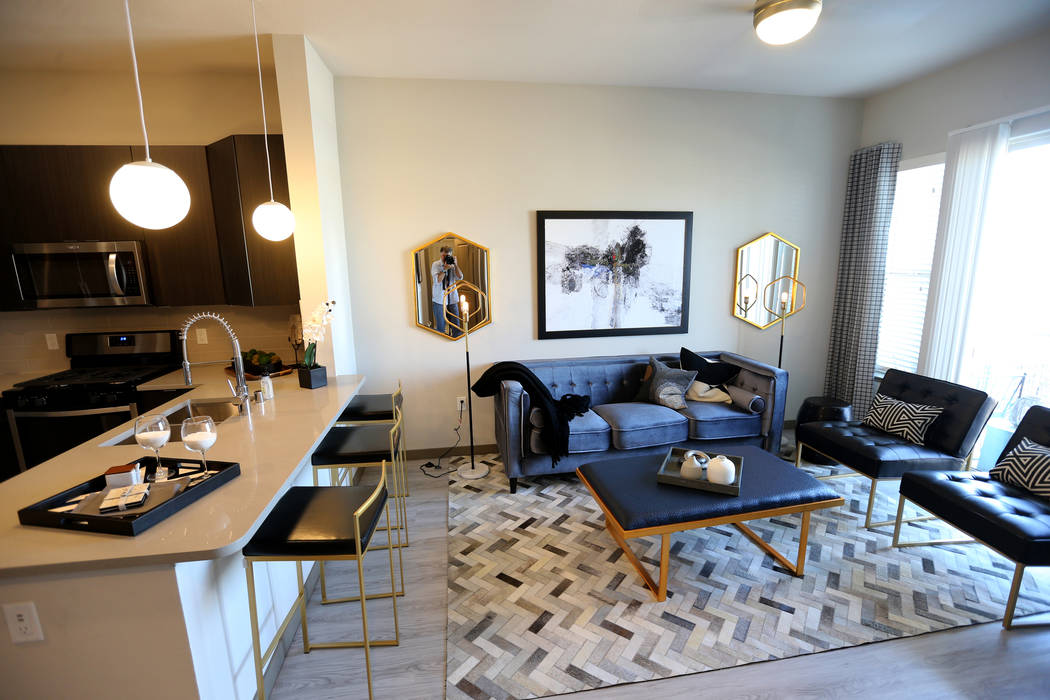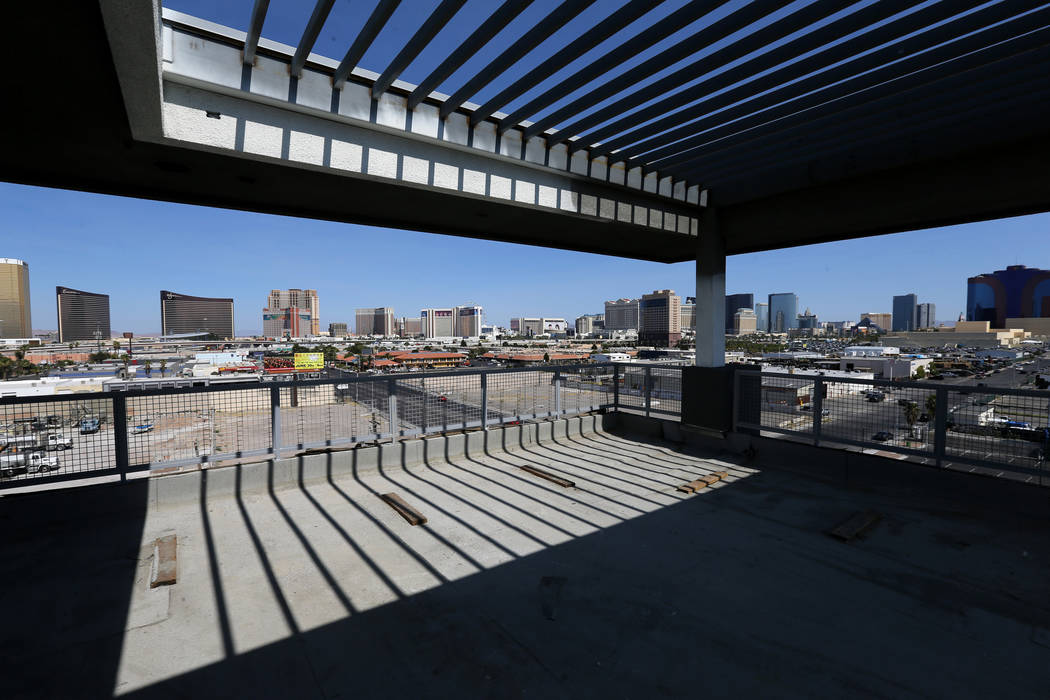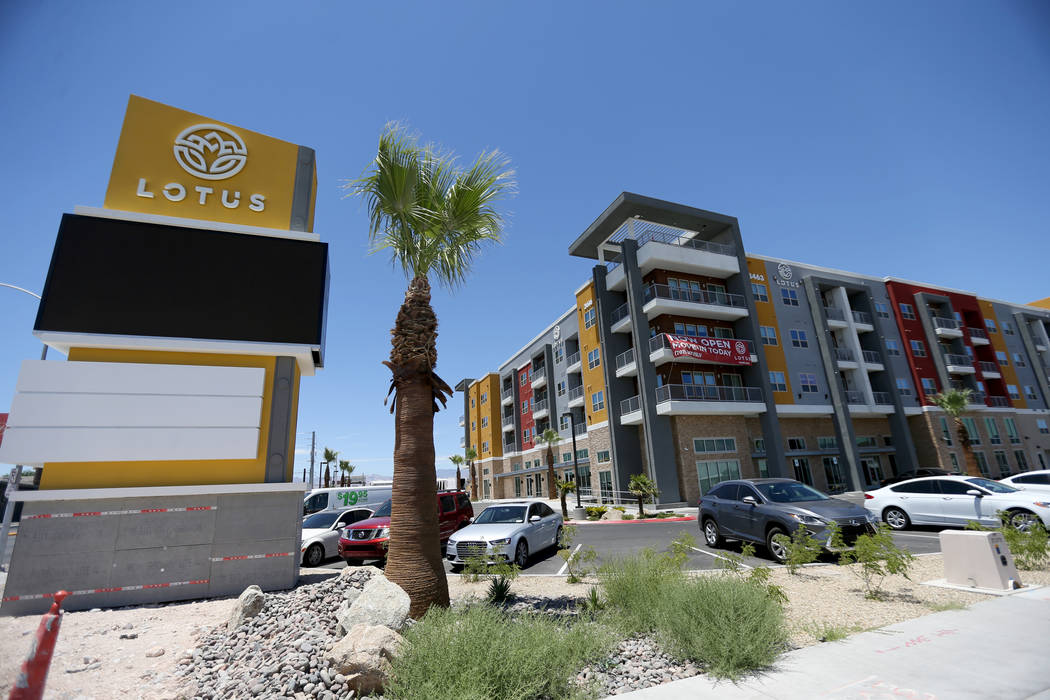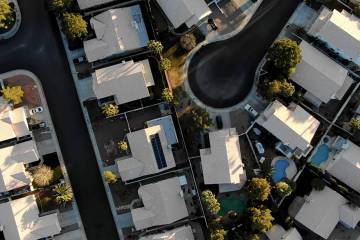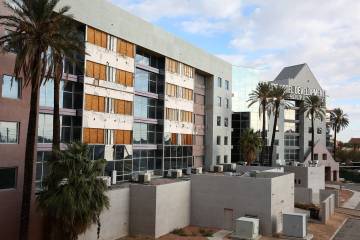Las Vegas Chinatown complex sticks out from other new rentals
Compared with other apartments popping up in Las Vegas, developer Jonathan Fore’s new project is in a location that is different than most.
The Strip is a mile east of his complex, Chinatown’s numerous eateries are just to the west, and its closest neighbors include an empty, graffiti-covered former strip club.
Fore is also charging pricey rents at his project, Lotus — and the building has drawn plenty of tenants.
He said last week that the 295-unit luxury complex at 3616 Spring Mountain Road is 49 percent leased. Units are opening in phases, and Fore said the last batch will be ready in September.
Amenities include a rooftop deck, a poolside DJ booth, a karaoke room, a virtual-reality sports room, and 8,000 square feet of ground-floor retail space that is slated to have three restaurants.
“Life is better in the Lotus position,” its website proclaims.
Las Vegas’ apartment-construction boom is heavily concentrated in the suburbs, where it’s easier and cheaper to build. Lotus, however, is part of a small but growing tally of rental projects in urban, more centrally located areas.
Fore, managing partner of Fore Property Co., has another one on the drawing board. He said he plans to break ground in October on a six-story, 293-unit complex on Twain Avenue just north of the Rio.
At Lotus, Fore said, the average apartment is 880 square feet, and tenants are paying an average of about $1.92 per square foot. That amounts to about $1,690 per month. By comparison, the average rental rate in Las Vegas is $1,003, according to Reis Inc.
Fore acknowledged he is charging a steep price, but, citing the lack of competition being built nearby, said he’s renting an average of about 11 units per week.
“There really hasn’t been anything new built here in the last 30 years,” he said.
His tenants include workers on the Strip, pilots and flight attendants, and Californians who visit Las Vegas frequently.
Las Vegas’ apartment market has heated up in recent years. Rents are climbing faster than the national average, the vacancy rate is among the lowest in the country, and investors are snapping up properties throughout the valley.
Suburban development is seen as a less risky venture, as developers have repeatedly shown they can sign tenants and fetch certain rents. In urban areas, the rental rates probably would have to be higher to make projects financially feasible, but there is little of a recent track record.
According to Fore, investors and lenders for suburban projects can go to their investment committees, “point at the deal next door” and say theirs will work because the other project is landing certain rents. For Lotus, he added, there was nothing to compare to.
Still, he figured he would rather have “300 units amongst myself” in the Chinatown area than “300 amongst 3,000 on the (215) Beltway.”
Contact Eli Segall at esegall@reviewjournal.com or 702-383-0342. Follow @eli_segall on Twitter.



